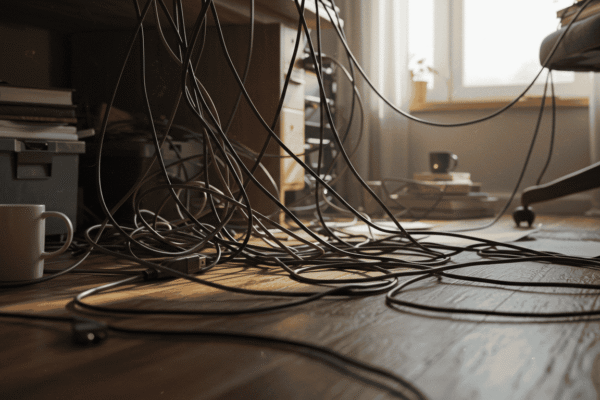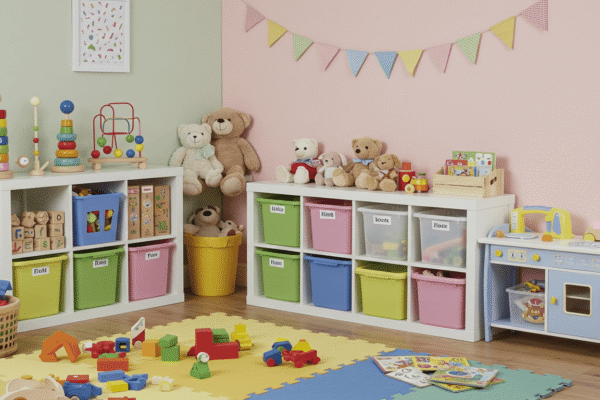Home Maintenance Checklist is the secret weapon every homeowner needs to keep their house safe, efficient, and looking great year-round. Whether you’re a new homeowner or just looking to stay on top of your upkeep, having a clear, well-organized seasonal home maintenance plan can save you time, money, and a lot of stress. In this ultimate guide, we’ll walk you through everything you need to know—from essential home care checklist items to expert tips on tackling tasks each season. Ready to protect your investment and enjoy a worry-free home? Let’s dive in!
Why a Home Maintenance Checklist Is Your Best Friend
Keeping your home in excellent condition requires consistent effort and attention, and this is where a home maintenance checklist becomes indispensable. It serves as a practical guide that breaks down the many tasks needed to preserve your home’s value, safety, and comfort throughout the year. Rather than relying on memory or reacting only when problems arise, a checklist helps you stay organized and proactive, ensuring nothing important is overlooked. Whether you’re managing a new house or a long-time residence, this tool can simplify your approach to seasonal home maintenance and make upkeep more manageable.
The Benefits of Regular Home Maintenance
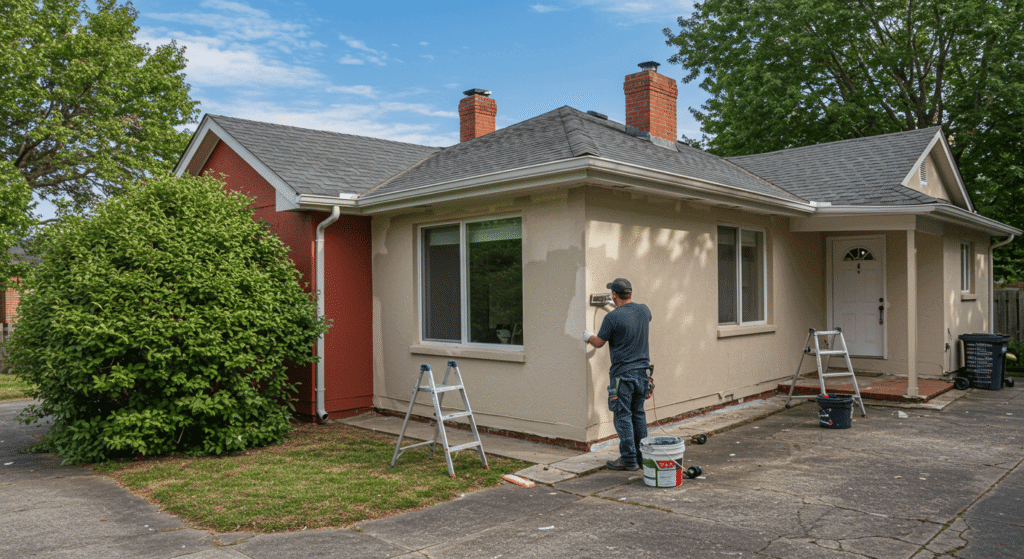
Regular maintenance helps prevent small issues from escalating into costly repairs. By addressing problems early, you extend the lifespan of critical home systems and materials. For example, cleaning gutters each fall can prevent water damage, while routine HVAC servicing ensures efficient heating and cooling. Beyond the financial benefits, consistent upkeep enhances your home’s safety, comfort, and energy efficiency. Well-maintained homes also retain their market value better, which is crucial if you plan to sell in the future. In short, regular care protects your investment while providing peace of mind.
How a Checklist Saves You Time, Money, and Stress
A detailed home maintenance checklist streamlines your tasks by clearly outlining what needs to be done and when. This prevents you from wasting time figuring out what to focus on next or forgetting critical chores. Early detection of issues through scheduled checks can save thousands of dollars in repairs down the line. Additionally, having a structured plan reduces stress by breaking down overwhelming projects into manageable steps. Knowing your home is well cared for also means fewer emergencies and last-minute fixes, making your life easier and your home safer.
Customizing Your Checklist for Your Home’s Unique Needs
No two homes are exactly alike, so your home care checklist should reflect your property’s specific characteristics and environment. Factors such as the age of your home, local climate, and landscaping will influence the type of maintenance required and its frequency. For example, a house in a snowy region needs more frequent roof inspections, while a home with mature trees may require regular gutter clearing. Customizing your checklist ensures you focus on the most relevant tasks for your situation, making your maintenance routine more efficient and effective.
| Task | Regular Maintenance Cost | Neglect Repair Cost | Time Spent (Regular) | Time Spent (Repair) |
|---|---|---|---|---|
| Gutter Cleaning | $50 | $1,000 (water damage) | 1 hour | 10+ hours |
| HVAC Servicing | $100 | $1,200 (replacement) | 2 hours | 20+ hours |
| Roof Inspection | $75 | $5,000+ (major repair) | 1 hour | 40+ hours |
Seasonal Home Maintenance Breakdown: What to Focus on and When
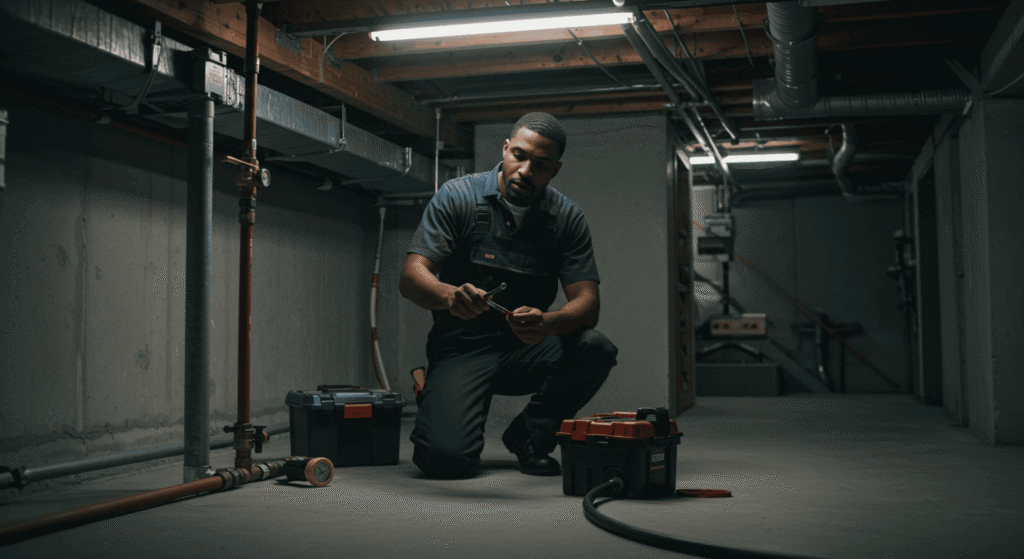
A well-planned seasonal home maintenance routine keeps your home functioning smoothly and protects it from weather-related damage. Each season brings unique challenges and opportunities to care for different parts of your home. Knowing exactly what to focus on and when can save you from costly repairs and keep your living space comfortable year-round.
Spring: Refresh and Repair After Winter’s Wear
Spring is the perfect time to assess the impact of winter’s harsh conditions and get your home ready for warmer weather. This season focuses on cleaning, repairs, and preparing your outdoor spaces.
Roof and Gutter Cleaning
Winter can leave your roof and gutters clogged with debris, ice, and leaves. Clearing gutters prevents water buildup that can damage your roof and foundation. Checking for loose or missing shingles also helps avoid leaks during spring rains.
HVAC System Tune-Up
Before the summer heat arrives, schedule a thorough HVAC inspection and tune-up. Replacing filters, cleaning coils, and checking refrigerant levels ensures your cooling system runs efficiently when you need it most.
Lawn and Garden Prep
Spring is the ideal time to prepare your garden beds, fertilize the lawn, and prune any damaged branches. Healthy landscaping not only boosts curb appeal but also helps prevent pests from invading your home.
Summer: Beat the Heat and Prevent Problems
Summer maintenance focuses on keeping your home cool and preventing damage from the hot months ahead.
Inspecting Windows and Doors for Air Leaks
Check seals and weather stripping around windows and doors to prevent cool air from escaping and hot air from entering. Proper insulation helps reduce energy bills and improves indoor comfort.
Pest Control Tips for Summer
Warm weather encourages pests like ants, mosquitoes, and wasps. Regularly inspect and seal any cracks or openings where insects can enter, and keep outdoor eating areas clean to deter unwanted visitors.
Fall: Prepare Your Home for Winter
As temperatures drop, it’s time to get your home ready for the cold months. Fall maintenance prevents winter damage and improves energy efficiency.
Furnace Check and Fireplace Cleaning
Have your furnace inspected and cleaned to ensure safe and efficient heating. If you use a fireplace, clean the chimney to prevent fire hazards caused by soot buildup.
Winterizing Outdoor Plumbing
Protect outdoor faucets and irrigation systems from freezing by draining hoses and installing insulation covers. This helps avoid burst pipes and costly repairs during winter.
Seasonal Maintenance Calendar Table
| Month | Key Tasks | Notes |
|---|---|---|
| March-April | Roof & gutter cleaning, HVAC tune-up, garden prep | Prepare for spring and summer |
| June-August | Seal windows/doors, pest control, check AC | Keep home cool and pest-free |
| September-November | Furnace inspection, chimney cleaning, winterize plumbing | Ready home for winter cold |
Monthly Home Maintenance Tasks to Keep Things Running Smoothly
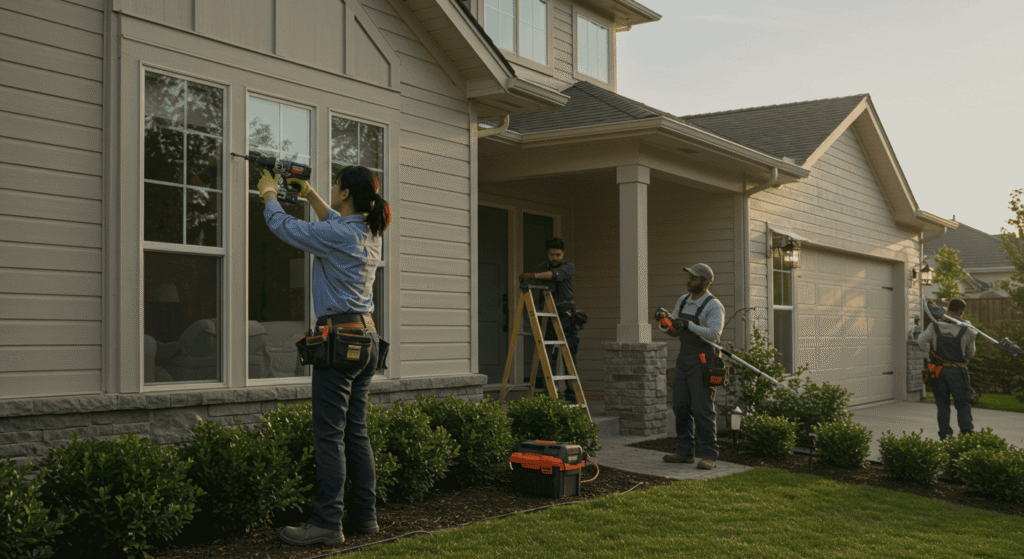
Staying on top of monthly home maintenance tasks helps you catch small issues early and maintain a safe, comfortable living environment. Breaking down chores into manageable monthly activities prevents overwhelm and keeps your home running efficiently all year long.
Indoor Checks: Safety and Functionality
Each month, it’s important to inspect key indoor areas to ensure everything is working properly and safely. Test smoke and carbon monoxide detectors to make sure they’re functioning. Check for any leaks under sinks and around toilets, and look for signs of mold or water damage. Also, clean or replace HVAC filters to maintain air quality and system efficiency.
Outdoor Inspections: Protecting Your Property
Regular outdoor checks protect your home’s exterior from damage caused by weather and wear. Inspect your roof for missing shingles or damage, clear debris from gutters, and check your foundation for cracks or signs of water pooling. Also, look over fences, walkways, and driveways for repairs that might be needed.
Quick Fixes You Can Do Yourself
Not every maintenance task requires a professional. Many minor repairs can be handled easily with basic tools. Tighten loose cabinet handles, lubricate door hinges, clear slow drains with natural remedies, and replace worn weather stripping around doors and windows. These quick fixes improve function and help prevent bigger issues later on.
Printable Monthly Maintenance Checklist
| Task | Done (✓) |
|---|---|
| Test smoke & carbon monoxide detectors | |
| Inspect plumbing for leaks | |
| Clean or replace HVAC filters | |
| Check for mold or water damage | |
| Inspect roof and gutters | |
| Clear gutters and downspouts | |
| Examine foundation for cracks | |
| Tighten loose hardware | |
| Lubricate door hinges | |
| Replace worn weather stripping |
This printable table with tick boxes makes it easy to stay organized and track your progress, turning your home maintenance checklist into an actionable monthly routine.
The Ultimate Preventative Home Maintenance Tips
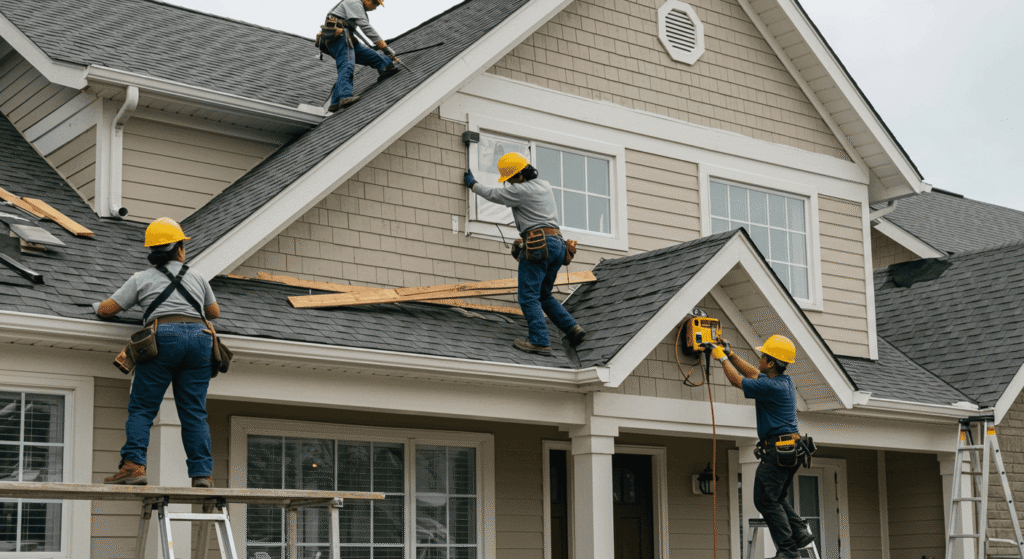
Preventative maintenance is the key to avoiding costly repairs and extending the life of your home’s systems and structure. By regularly inspecting your home and addressing small issues early, you can save money and keep your living space safe and comfortable. Here are some expert tips to help you stay ahead of potential problems.
How to Spot Small Problems Before They Become Big Ones
The sooner you catch minor issues, the easier and less expensive they are to fix. Look out for early warning signs like slow drains, small leaks, unusual noises from appliances, or cracks in walls and ceilings. Pay attention to changes in your utility bills, which can indicate hidden leaks or inefficient systems. Regularly inspect key areas such as the roof, foundation, plumbing, and electrical systems to identify wear and tear before it worsens.
DIY vs. When to Call a Professional
While many maintenance tasks are easy to handle yourself, some require the expertise of a trained professional. Simple jobs like tightening screws, replacing filters, or cleaning gutters are perfect for DIY. However, electrical repairs, major plumbing issues, roof damage, or anything involving gas lines should always be left to licensed experts to ensure safety and compliance with local codes.
Home Safety Measures You Should Never Skip
Certain safety checks should be non-negotiable in your maintenance routine. Regularly test smoke and carbon monoxide detectors and replace batteries as needed. Inspect fire extinguishers and know how to use them. Make sure stair railings and smoke escape routes are clear and secure. Prevent mold by controlling moisture levels and fixing leaks promptly.
Red Flag Warning Box: Signs You Shouldn’t Ignore
- Persistent water stains or discoloration on walls or ceilings
- Musty or moldy odors inside the home
- Cracks wider than ¼ inch in the foundation or walls
- Flickering lights or frequent circuit breaker trips
- Unusually high water or energy bills
- Sagging or damaged roof shingles
- Slow-draining sinks or toilets that run continuously
If you notice any of these signs, it’s important to act quickly—either by tackling the problem yourself if it’s minor or scheduling a professional inspection to avoid further damage.
Essential Home Systems Maintenance: What to Know
Maintaining your home’s essential systems is crucial for comfort, safety, and efficiency. Understanding the specific care each system needs—and when—helps you avoid unexpected breakdowns and costly repairs. Below, we break down the key maintenance tips for HVAC, plumbing, and electrical systems to keep everything running smoothly year-round.
HVAC Systems: Seasonal Tips and Tricks
Your heating, ventilation, and air conditioning system works hard to maintain indoor comfort. To keep it efficient, schedule professional tune-ups at least twice a year—once in spring before cooling season and once in fall before heating season. Regularly replace air filters every 1-3 months, depending on usage, and keep vents clean and unobstructed. This routine improves air quality, reduces energy costs, and extends system lifespan.
Plumbing Checks: Avoiding Leaks and Freezes
Plumbing maintenance helps prevent water damage and costly repairs. Inspect visible pipes monthly for leaks, corrosion, or drips. In colder climates, winterize outdoor faucets and irrigation lines to avoid freezing and bursting pipes. Flush water heaters annually to remove sediment buildup and improve efficiency. Being proactive can prevent inconvenient plumbing emergencies.
Electrical Safety Inspections
Regular electrical inspections reduce the risk of hazards like shorts, overloads, or faulty wiring. Check outlets and switches for signs of damage or discoloration and test ground-fault circuit interrupters (GFCIs) quarterly. Hire a licensed electrician every few years for a comprehensive safety inspection, especially if your home is older or you notice flickering lights or frequent breaker trips.
Maintenance Frequency Comparison Table
| System | Maintenance Task | Frequency | Notes |
|---|---|---|---|
| HVAC | Professional tune-up | Twice a year | Spring & Fall |
| HVAC | Air filter replacement | Every 1-3 months | More often with pets or allergies |
| Plumbing | Leak inspection | Monthly | Visual check of exposed pipes |
| Plumbing | Winterize outdoor plumbing | Annually (Fall) | Prevent frozen/burst pipes |
| Plumbing | Water heater flush | Annually | Remove sediment |
| Electrical | Outlet/switch visual inspection | Quarterly | Look for damage or discoloration |
| Electrical | GFCI testing | Quarterly | Ensure safety devices function |
| Electrical | Professional safety inspection | Every 3-5 years | Especially for older homes |
This table provides a clear plan to help you schedule essential system maintenance and keep your home operating safely and efficiently.
Energy Efficiency and Home Maintenance: Save Money Year-Round
Improving your home’s energy efficiency through regular maintenance and smart upgrades not only lowers utility bills but also reduces your environmental footprint. By combining simple fixes with seasonal energy-saving habits, you can make your home more comfortable and cost-effective all year long.
Simple Upgrades That Improve Efficiency
Small changes can make a big difference. Consider adding weather stripping to doors and windows to seal drafts and prevent heat loss. Installing programmable thermostats allows precise temperature control, reducing wasted energy when you’re away or asleep. Switching to LED lighting and using energy-efficient appliances also helps reduce overall consumption without sacrificing comfort.
Seasonal Energy-Saving Tasks
Each season requires specific attention to maintain energy efficiency. In winter, ensure windows and doors are properly insulated and seal any leaks. During summer, keep blinds or curtains closed during the hottest parts of the day to reduce cooling loads. Regularly servicing your HVAC system before peak seasons helps it run efficiently, avoiding spikes in energy use.
Tracking Your Home’s Energy Use
Monitoring your energy consumption is a powerful way to identify waste and measure the impact of your maintenance efforts. Keeping a monthly log of your electricity, gas, and water bills helps spot unusual spikes early. Using a simple energy tracker graph lets you visualize trends and set goals for improvement.
Energy Tracker Template Example
| Month | Electricity (kWh) | Gas (Therms) | Water (Gallons) | Notes (Repairs/Upgrades) |
|---|---|---|---|---|
| January | ||||
| February | ||||
| March | ||||
| … |
How to Organize Your Home Maintenance Checklist Like a Pro
Creating a home maintenance checklist is just the first step—organizing it effectively makes all the difference in staying consistent and stress-free. With the right strategies, you can keep track of tasks, deadlines, and progress without feeling overwhelmed.
Digital Tools and Apps for Tracking Tasks
There are many digital solutions designed to simplify your home maintenance routine. Apps like task managers, calendar tools, and dedicated home maintenance platforms allow you to schedule, set reminders, and even share tasks with family members. Features such as progress tracking and notifications ensure nothing falls through the cracks, helping you maintain your home effortlessly.
Paper vs. Digital: What Works Best for You?
Choosing between paper and digital organization depends on your personal preferences and lifestyle. Paper planners or printed checklists offer a tactile experience that some find more motivating and easier to customize. Digital tools provide flexibility, easy editing, and automated reminders. Consider your habits and tech comfort level to pick the method that encourages consistent upkeep without adding stress.
Setting Reminders Without Overwhelm
Even the best system can become overwhelming if reminders are too frequent or poorly timed. To avoid burnout, prioritize essential tasks and group related chores together. Set reminders spaced out logically—monthly or seasonal rather than daily notifications—and allow flexibility for unexpected needs. This balanced approach keeps you on track while preserving your sanity.
Wrapping Up: Tips for Keeping Your Checklist Fresh and Useful
A home maintenance checklist is a living document that should evolve with your home and lifestyle. Keeping it up-to-date and engaging ensures it remains a helpful tool rather than a forgotten chore list. Here are practical ways to keep your checklist relevant and motivating over time.
Updating Your Checklist Based on Home Age and Changes
As your home ages, maintenance needs will shift. Older homes may require more frequent inspections of plumbing, roofing, or electrical systems, while new additions or renovations introduce fresh tasks. Regularly review and adjust your checklist to reflect these changes, ensuring you focus on what matters most for your unique home situation.
Involving the Whole Family in Maintenance Tasks
Sharing maintenance responsibilities makes the workload lighter and teaches everyone the value of caring for your home. Assign age-appropriate tasks to family members, create a schedule together, and encourage teamwork. This not only keeps your home in better shape but also builds responsibility and pride in the household.
Celebrating Completed Maintenance Wins
Motivation can fade if home upkeep feels like endless work. Celebrate progress by acknowledging completed tasks or milestones. Use a checklist completion tracker or a simple reward system to mark achievements—whether it’s a family treat, a small outing, or just a moment of recognition. Positive reinforcement turns maintenance into a rewarding experience.
Motivational Completion Tracker Example
| Task Completed | Date | Reward Idea | Family Member Responsible |
|---|---|---|---|
| Gutter Cleaning | Movie night | Dad | |
| HVAC Filter Change | Favorite dessert | Mom | |
| Smoke Detector Test | Game night | Kids |
This kind of tracker encourages accountability and makes maintaining your home a shared, enjoyable journey for everyone involved.
Master Your Home Maintenance Checklist for a Safer, More Comfortable Home
A well-crafted home maintenance checklist is your ultimate tool for protecting your investment, saving money, and ensuring a safe, comfortable living environment year-round. By staying organized, proactive, and flexible, you can easily manage tasks without stress. Remember, regular upkeep not only prevents costly repairs but also enhances your home’s value and your peace of mind. Start using your checklist today and enjoy the benefits of a well-maintained home for years to come.

